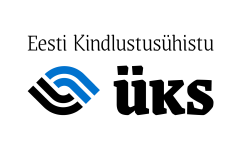 The busy statistics calendar of the past weeks has not made it possible to give due attention to everything that is important. Consequently, this weekly commentary will address the foreign trade and registered unemployment statistics, were published already at the end of last week.
The busy statistics calendar of the past weeks has not made it possible to give due attention to everything that is important. Consequently, this weekly commentary will address the foreign trade and registered unemployment statistics, were published already at the end of last week.
Sad autumn for exports
At least in terms of general figures, the autumn months have been extremely bleak for Estonian exports. While in September the export of goods decreased by 10%, in October the decline shrank to 12%. In the course of ten months, exports have declined by 4% year-on-year. The weak numbers of September and October are mainly caused by the decline in three major product groups.
In October, the exports of the main exports article, machinery and equipment, decreased 18% year-on-year. Within the product group the main influencing factor was the 40% decline in the exports of telecommunication equipment, which comprises 40% of the total exports of machinery and equipment. It seems that the demand for components produced here has declined, which is amplified further by the high comparison basis of last year. The other large product group where the exports have declined more than 40% in the last two months is mineral products. This is due to the decline in the exports of oil products and various oils, which is mainly related to the Estonian transport sector. The exports of electrical energy, being far down in the negative in summer due to the low price of electricity from the Nordic countries, has luckily taken an upturn again.
Since July the exports of metal and metal products have been in decline. In this product group, the export figures have been impacted by a decrease in commodity prices and transit. At the same time the trend has also turned in the export of metal structures, where a large part of added value is created precisely by Estonian production companies. Starting from early spring until the end of summer the exports of metal structures still grew by 20–30% year-on-year, but dwindled in September and took a downturn in October. However, it must be kept in mind that it is an area of activity where companies often depend on large orders, which due to their volatile nature sometimes provide a lot of work, but make one tighten their belt in quieter times. The Estonian timber industry as well as the production of mattresses and pillows, classified as the furniture industry, still seem to be doing well. The exports of prefabricated (wooden) structures increased in September and October 45% year-on-year and the exports of mattresses and the like by 16%.
The main issues in exports are addressed by the survey of the competitiveness of exporters commissioned by the Ministry of Economic Affairs. The figures give a good picture of the main risk in the Estonian exports – a great deal of concentration. Namely the 10 largest exporters comprise a quarter and 100 largest exporters around a half of the total exports. While the survey does not address it, in the past the total weight of Estonia’s largest exporter has been estimated to be even a tenth. The larger the prevalence of single major companies, the bigger their impact is on the economy as a whole. The problems or business decisions of a few large companies can have a significant impact on the foreign trade and economy of the country when there are changes on the market. The survey also highlights the positive side for major companies – larger companies are facing less obstacles in exports. Entering the foreign market is more complicated for small businesses due to their limited financial and human resources; too often they are not able to stay on the market. When other challenges have been overcome, there is also the issue of meeting the target volumes of the big markets. Even large companies on the Estonian scale may prove to be too small, for example, for the German market. From the aspect of the long-term development of Estonian exports, the expansion of the circle of major companies capable of selling products abroad would be welcome. Still, the number of exports companies has increased significantly in the past few years. While at the end of 2011 there were 12,000 export companies, then by the end of 2014 the number had grown to 14,500 companies.
Other important conclusions drawn from the survey include the conservative disposition of the Estonian companies both in their choice of target countries as well as their future plans. The main focus is on the neighbouring markets and too often a passive stance is taken in the making of strategic plans. The main obstacle for Estonian exporters is the strong competition on the foreign markets and, mainly for the companies operating as subcontractors, the instability of the demand. As the major issues with the Estonian economic environment, the survey highlights the absence of qualified workforce, which was brought out by 80% of exporters. According to the survey the state should be focusing on the development of support structures for exports and facilitating entering to the new exports markets and expansion on the markets. While in a liberal economy companies should manage their sales themselves, countries are competing against each other in supporting exports and for Estonian small businesses centralised support is very important for the development of exports.
Registered unemployment continues to rise
Warning signs are increasing on the job market. While in Q3 the job market statistics was still very positive, the last few months have been displaying a clear turn in the trend. The number of registered unemployed people when compared to the same month last year has been increasing since August. While in the last few months the growth was still marginal, then in November there were almost 1,900 more people registered as unemployed. While it is too early to make any substantive conclusions on the basis of the few months’ figures, currently it seems that the negative scenario is being realised, where the growth of external demand is delayed, which forces the labour-intensive companies to cut their staff due to the rapid growth of labour costs. However, given the general low level of unemployment, it is still the best time for the economy to raise its efficiency.
Mihkel Nestor
Economic Analyst, SEB















